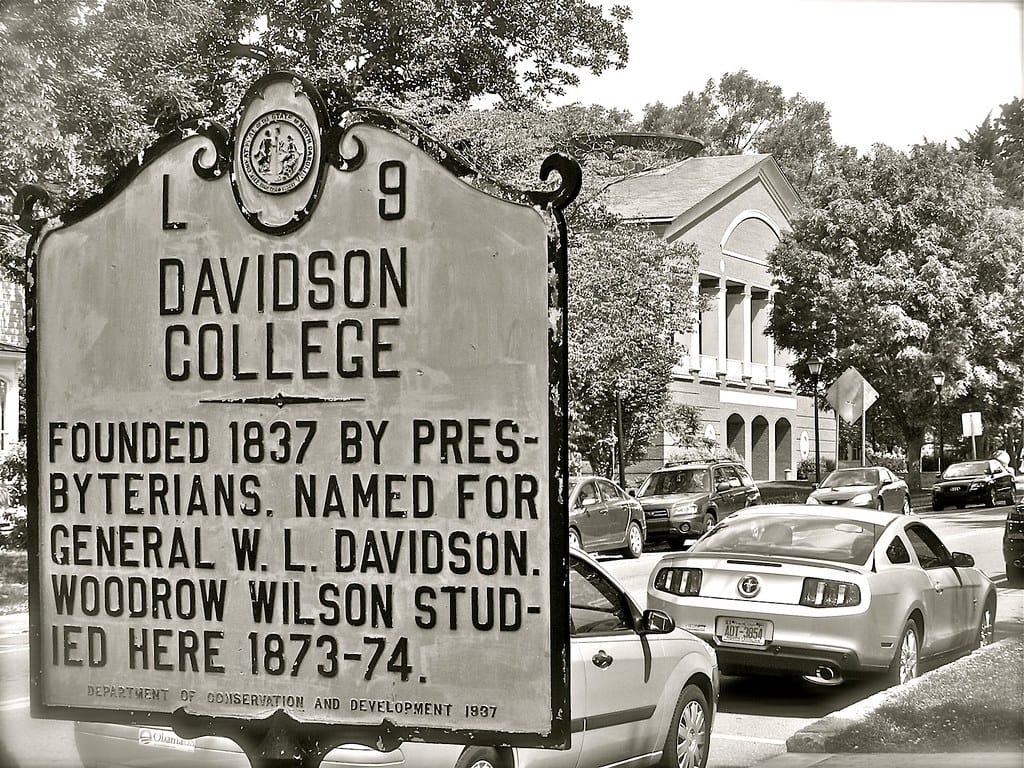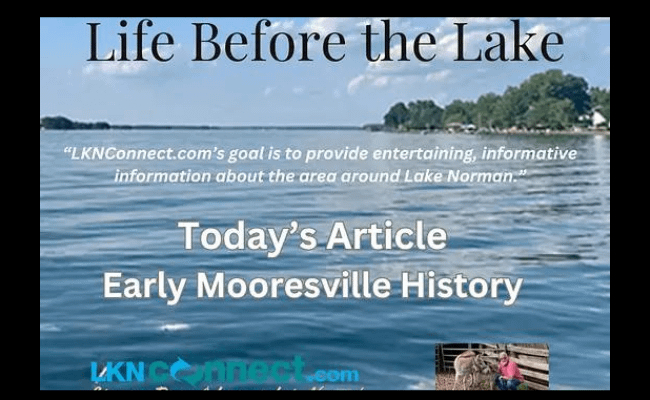Guide to Lake Norman Nightlife – November her 27 – 30,2025
- Guide to Nightlife in Lake Norman

John Davidson, described as “a prosperous merchant,” was a member of the Davidson family who migrated south from Pennsylvania. Davidson’s Creek was the westernmost settlement in North Carolina at the time, and according to Robert Ramsey’s Carolina Cradle, it “became the nucleus of the Centre Presbyterian Congregation.”[ John Davidson’s son William went on to serve in the American Revolution, eventually becoming a major. Maj. William Davidson was a cousin of Col. William Davidson, the first state senator from Buncombe County, North Carolina, who in turn was a cousin of Gen. William Lee Davidson, for whom Davidson College was named. Gen. Davidson’s son William Lee Davidson II sold 469 acres to the Concord Presbytery to start Davidson College.
The history of the town of Davidson is inextricably linked to Davidson College, which predated the surrounding community and influenced its development. Although Davidson’s growth in the late nineteenth and early twentieth centuries typified small railroad towns throughout the Piedmont, the presence of the college created a unique village. The tree-shaded campus filled with classically inspired architecture distinguished Davidson from other communities. The sway of the school also extended beyond the campus to the entire town, influencing commerce, culture, and the character of its architecture.
The 1869 Branson’s business directory recorded four dry goods merchants in the town as well as a cabinetmaker, a miller, and three physicians. Soon after the arrival of the railroad, Davidson became a shipping point for cash crops, especially cotton, and a service center for farmers. In common with other railroad towns in the region, textile investors constructed cotton mills and mill villages along the rail corridor. The Linden Cotton Factory, erected in 1890 on Depot Street, was the first textile plant in Davidson, and in 1908, the Delburg Cotton Mills was constructed nearby. Two thousand bales of cotton were sold at Davidson annually in the early 1900s.
In 1891, the town’s name was changed from “Davidson College” to “Davidson,” emblematic of the community’s expanding roles for town. Davidson’s cotton mills spurred the town’s growth, and by 1910, the population of Davidson had reached 500 residents, climbing to 1,500 by the 1920s. Between 1900 and the Great Depression, the business district evolved from a co-mingling of stores and residences into contiguous rows of one- and two-story brick commercial buildings.

The heart of downtown – opposite the college – contained a full complement of small-town stores and services, including four general merchandise stores, a drug store, a laundry, a tailor shop, two barber shops, a hardware store, a post office, a bank, and several restaurants. Physicians, building contractors, and milliners also had Main Street addresses. Behind Main Street along the railroad tracks stood the small 1897 Southern Railway Depot, a livery, flour mill, sawmill, cotton gins, a cottonseed oil company, a blacksmith shop, and a buggy manufacturer. When Davidson College opened in March 1837, the community consisted of 2 professors, their families and slaves, and 64 students. Between 1837 and 1850, the Town of Davidson (then known as Davidson College) grew from a handful of households to a settled village of over 200 residents. The census of 1850 shows a population of 68 college students, 100 free white men, 86 free white women, no free blacks, and probably somewhere between 70 and 100 slaves. The town buildings were centered around the college, with businesses being built on Main Street across from the campus buildings and homes located near businesses. There was only one church in town and no public schools.
Twenty years later, all slaves had been freed, a rail line had been re-established through the town, and several mills had opened. Town neighborhoods began to develop around the churches and the schools. Mill housing was built for mill workers on Delburg and Depot Street. Families not employed by one of the mills concentrated around the elementary school on South Street, around the Methodist Church on Walnut, and across from campus on Concord Road. Other families lived near their churches and around the school building on Sloan Street (currently the Ada Jenkins Center). Some families still lived near or on Main Street, and others lived on Griffith Street, which was then more of a side road than a major street.
As the town began to pave streets and add sidewalks, the policy requiring property owners to pay a portion of these costs led to an uneven pattern. In particular, owners of rental properties made no efforts to create sidewalks, so gaps developed around these properties. By the 1960s, most neighborhoods on the east side of town had sidewalks, while very few existed on the west side. In 1999, the Town Board initiated change by, for the first time ever, borrowing money to install sidewalks and other road improvements on several streets in West Davidson.
I have lived in Huntersville my entire life. We actually trace my family’s history back for eight generations. When folks hear this, they ask, “What was life like before the lake?” That question inspired me to research the history of the area. This new feature is the result of those questions. I plan to write many articles about “Life Before The Lake” and post them on www.Lknconnect.com’s website.

Photos were collected from various sources including, but not limited to, Davidson Historical Society, Jack Conrad’s collection and News of Davidson.
